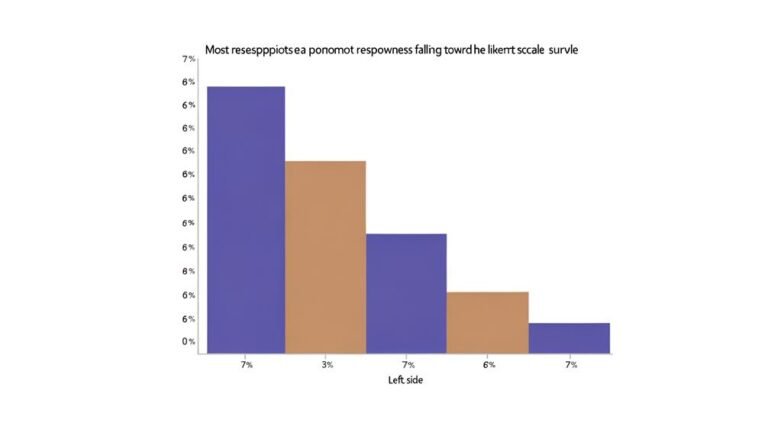Managerial Missteps Prompt Top Talent to Flee
In an era where top talent is the lifeblood of organizations, the repercussions of managerial missteps reverberate throughout the corporate landscape. From overlooked workload management to inadequate recognition, the implications of these errors can be profound.
As leaders grapple with the complexity of retaining key personnel, a deeper exploration into the root causes of talent exodus becomes imperative. Stay tuned to uncover the nuanced interplay between leadership missteps and top talent attrition, shedding light on the critical strategies needed to navigate these challenges successfully.
Key Takeaways
- Lack of recognition and rewards drives away top talent
- Ignoring skill development leads to talented employees leaving
- Poor boss-employee relationships cause top performers to flee
- Disregarding commitments and integrity erodes employee loyalty
Workload Mismanagement Impacts Employee Retention
How does the mismanagement of workloads influence the retention of valuable employees within an organization?
Employee burnout and productivity decline are common consequences of overworking staff. Research shows that productivity starts to decline after 50 hours of work per week, leading to diminished output and potential errors.
When employees are consistently overloaded without adequate support or recognition, they are at a higher risk of burnout, which negatively impacts their job satisfaction and commitment to the organization.
It is essential for management to balance workload increases with appropriate rewards, such as raises, promotions, or title-changes, to prevent burnout and ensure employee retention.
Proactively addressing workload management can help maintain a motivated and engaged workforce, ultimately benefiting the organization's bottom line.
Lack of Recognition and Rewards
Insufficient recognition and rewards in the workplace can significantly impact employee motivation and engagement levels, ultimately affecting retention rates within the organization. To address this issue effectively, organizations need to implement robust recognition strategies and reward systems, tailored to individual preferences and contributions.
Key elements to consider include:
- Acknowledging good work to motivate employees
- Tailoring rewards to make each employee feel valued
- Frequent recognition for top performers
- Positive reinforcement to boost morale and productivity
- Ensuring that lack of recognition does not lead to disengagement and turnover
Neglect of Skill Development and Feedback
Effective skill development and feedback are essential components of fostering the growth and engagement of talented employees within an organization. Skill enhancement is an ongoing process crucial for the progression of top performers. Neglecting skill development can lead to boredom and stagnation, ultimately resulting in disengagement and turnover.
Managers play a vital role in providing feedback and guidance to ensure that employees continue to evolve professionally. Cultivating a feedback culture where open communication is encouraged can significantly impact the motivation and satisfaction levels of talented individuals.
Poor Employee Care and Relationships
The foundation of a resilient and engaged workforce lies in nurturing strong employee care and fostering positive relationships within the organization. When managers prioritize personal involvement and empathy building, they create a supportive environment that enhances employee retention and satisfaction.
Key strategies to achieve this include:
- Regular one-on-one meetings to demonstrate care and understanding.
- Providing opportunities for team-building activities to strengthen relationships.
- Encouraging open communication to address concerns and build trust.
- Recognizing and celebrating individual strengths and achievements to show value.
- Offering support for personal and professional development to foster a sense of investment in each employee's growth.
Integrity Breaches and Broken Commitments
Experiencing integrity breaches and broken commitments can deeply impact employee morale and trust within an organization, potentially leading to disengagement and decreased loyalty. Trust violations and promise betrayal erode the foundation of a healthy work environment. When commitments are disregarded, employees feel undervalued and disrespected, causing a ripple effect on motivation and dedication. To illustrate the consequences of such breaches, consider the following table:
| Effects of Integrity Breaches | ||
|---|---|---|
| Decreased Morale | Weakened Trust | Increased Turnover |
| Employees feel demotivated | Trust in leadership diminishes | Top talent seeks other opportunities |
| Engagement levels drop | Collaboration and teamwork suffer | Company reputation may be tarnished |
Fostering a culture of integrity and commitment is paramount to retaining top talent and sustaining organizational success.
Inadequate Talent Management Strategies
Integrity breaches and broken commitments underscore the critical importance of addressing inadequate talent management strategies within organizations. Ineffective recruitment and talent neglect can significantly impact employee retention and organizational success.
To mitigate these issues, organizations must:
- Implement targeted recruitment strategies to attract top talent
- Develop comprehensive training and development programs to nurture employee skills
- Establish clear paths for career progression based on merit
- Provide ongoing support and feedback to maintain employee engagement
- Recognize and reward employees for their contributions consistently
Communication Breakdowns and Ineffectiveness
Addressing communication breakdowns and ineffectiveness within an organization is paramount for fostering a cohesive and productive work environment. Effective communication strategies include establishing clear channels for information flow, encouraging open dialogue, and actively listening to employees. Trust building strategies involve keeping promises, being transparent in communication, and demonstrating integrity consistently. By implementing these strategies, managers can create a culture of trust, collaboration, and understanding within the organization.
| Trust Building Strategies | Communication Strategies |
|---|---|
| – Keep promises | – Establish clear channels |
| – Be transparent | – Encourage open dialogue |
| – Demonstrate integrity | – Actively listen |
Flawed Leadership Practices
Identifying and rectifying flawed leadership practices is essential for fostering a culture of trust, growth, and success within an organization. Flawed leadership practices can lead to leadership shortcomings and ultimately result in an employee exodus. To address this, organizations must focus on correcting managerial mistakes to prevent talent flight.
Key strategies to improve flawed leadership practices include:
- Conducting regular leadership assessments to identify areas for improvement
- Providing ongoing leadership training and development programs
- Encouraging open communication and feedback between leaders and employees
- Setting clear expectations and goals for leaders to follow
- Establishing a culture of accountability and transparency within the leadership team.
Conclusion
In the intricate web of corporate leadership, the delicate balance of effective management can either nurture a garden of loyalty or sow the seeds of discontent. As the threads of engagement and retention intertwine, the fabric of organizational success hangs in the balance.
Leaders must wield their influence with precision, weaving a tapestry of trust, recognition, and communication to ensure that top talent remains steadfast in their commitment. Only then can the symphony of success resonate harmoniously throughout the corridors of the corporate world.






